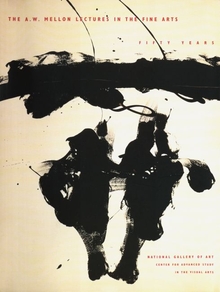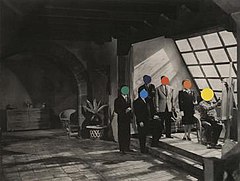The A. W. Mellon Lectures in the Fine Arts were established in 1949 to bring to the people of the United States the results of the best contemporary thought and scholarship bearing upon the subject of the fine arts.[1] The lectureship has since become an important honor bestowed upon important scholars and critics. Speakers have included Mary Miller, Anthony Grafton, Kirk Varnedoe, Helen Vendler, T. J. Clark, among many others.
A. W. Mellon Lectures in the Fine Arts - National Gallery of Art
https://www.nga.gov/audio-video/mellon.html
The A. W. Mellon Lectures in the Fine Arts were inaugurated in 1949. Endowed by a gift of the Old Dominion Foundation and the Avalon Foundation (creations of Paul Mellon and his sister, Ailsa MellonBruce, respectively) the lecture series ...
The A.W. Mellon Lectures in the Fine Arts
Fifty Years
Introduction by Elizabeth Cropper
 View InsidePrice: $39.95
View InsidePrice: $39.95
January 11, 2003
256 pages, 8 1/4 x 11 3/4
63 b/w illus.
ISBN: 9780300099614
Paper
National Gallery of Art, Washington
The A. W. Mellon Lectures in the Fine Arts were begun in 1952 at the National Gallery of Art in order to bring the best in contemporary scholarship to the public. To mark the fiftieth anniversary of the acclaimed series, the Center for Advanced Study in the Visual Arts has published this handsomely illustrated documentary volume. The book tells the story of the genesis of the lectureship, featuring essays by a variety of contemporary scholars that discuss the first fifty lecturers—ranging from Jacques Maritain to Salvatore Settis and including such influential speakers as Anthony Blunt, Kenneth Clark, H. W. Janson, E. H. Gombrich, Kathleen Raine, Jacques Barzun, and Arthur Danto—their fields of expertise, and the subject matter and historical context for their talks. These graceful and balanced writings provide a vivid sense of the significance of the lectureship and its participants through commentary, critique, and lively personal anecdotes.
Elizabeth Cropper is dean of the Center for Advanced Study in the Visual Arts at the National Gallery of Art, Washington, D.C.
Browse Princeton's Series (by Date) in The A. W. Mellon Lectures in the Fine Arts
The A. W. Mellon Lectures in the Fine Arts
- GO TO LISTING BY TITLE
- GO TO LISTING BY DATE
- GO TO LISTING BY AUTHOR
- PRINCETON LEGACY LIBRARY BY SUBJECT/DATE




















